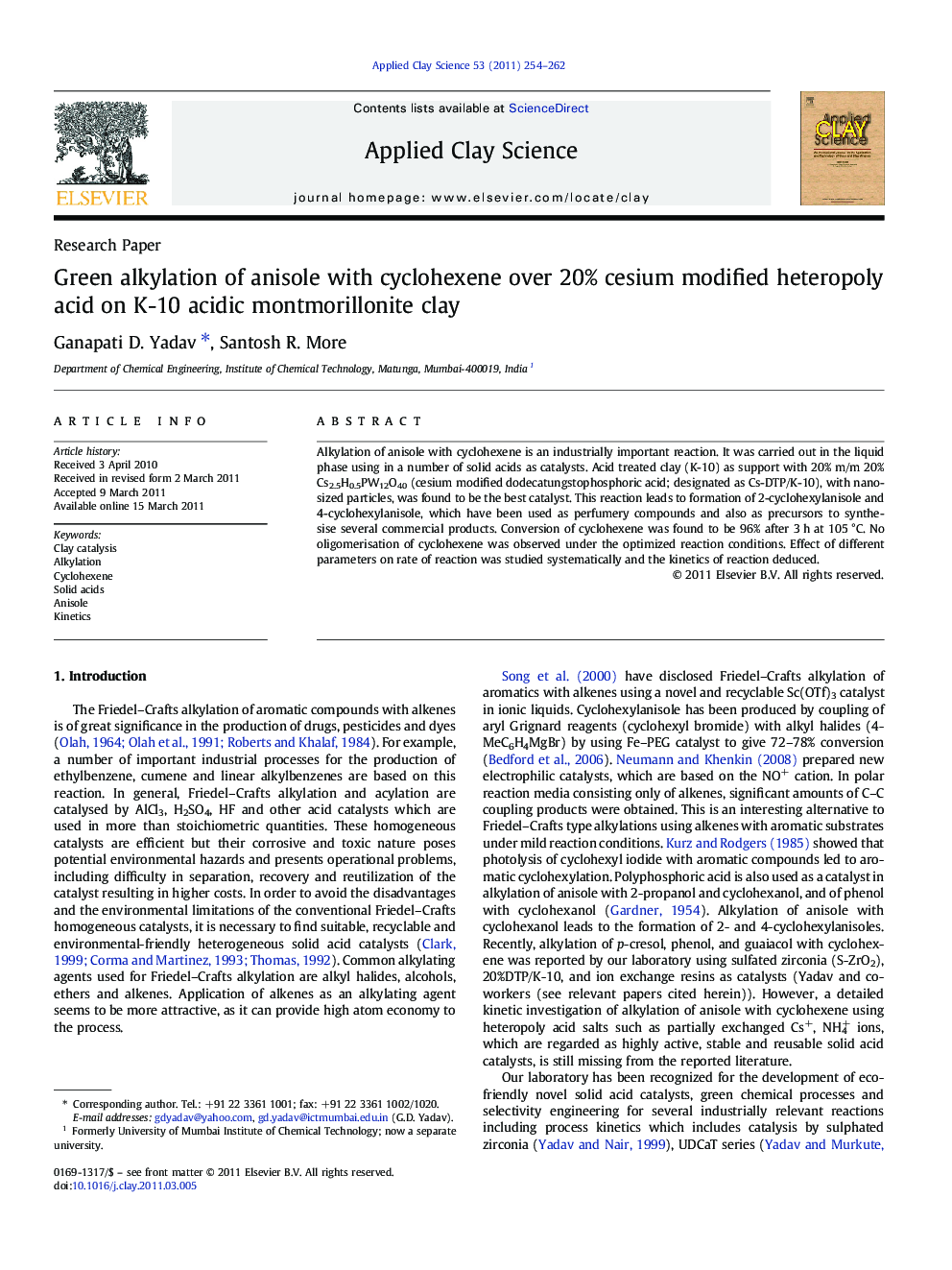| Article ID | Journal | Published Year | Pages | File Type |
|---|---|---|---|---|
| 1695631 | Applied Clay Science | 2011 | 9 Pages |
Alkylation of anisole with cyclohexene is an industrially important reaction. It was carried out in the liquid phase using in a number of solid acids as catalysts. Acid treated clay (K-10) as support with 20% m/m 20%Cs2.5H0.5PW12O40 (cesium modified dodecatungstophosphoric acid; designated as Cs-DTP/K-10), with nano-sized particles, was found to be the best catalyst. This reaction leads to formation of 2-cyclohexylanisole and 4-cyclohexylanisole, which have been used as perfumery compounds and also as precursors to synthesise several commercial products. Conversion of cyclohexene was found to be 96% after 3 h at 105 °C. No oligomerisation of cyclohexene was observed under the optimized reaction conditions. Effect of different parameters on rate of reaction was studied systematically and the kinetics of reaction deduced.
Graphical abstractAtom economical green alkylation of anisole with cyclohexene over 20% cesium modified heteropoly acid on K-10 acidic clay.Figure optionsDownload full-size imageDownload as PowerPoint slideResearch Highlights► Alkylation of anisole with cyclohexene with 20% m/m 20%Cs2.5H0.5PW12O40/K-10 as nano-catalyst. ► Formation of 2- and 4-cyclohexylanisole which are used as perfumery industry. ► Conversion of cyclohexene was 96% after 3 h at 105 °C. ► No oligomerisation of cyclohexene under optimized reaction conditions. ► Kinetics of reaction is deduced.
